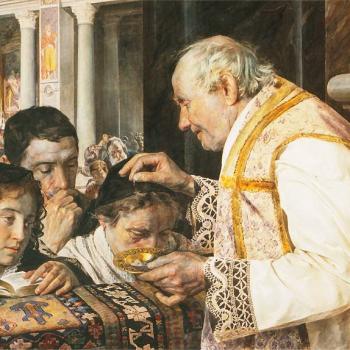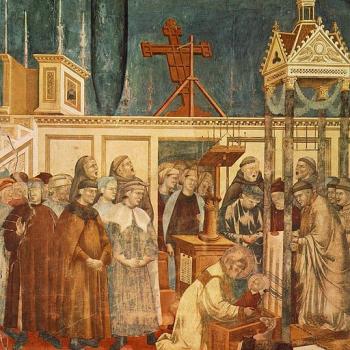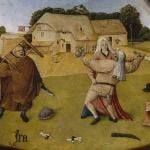I’ve just returned from my quasi-annual trip to Spain, and I thought I would bundle together some random observations and comments from this and previous trips. I draw no deep conclusions, but I think that seeing the daily life of the Church in another country is useful for understanding the Church in the US better.
1) The Church in Spain is on the rocks, with mass attendance reaching catastrophically low levels. Superficially, mass attendance looks good, until you stop to think that 90+ percent of the population at least nominally identifies itself as Catholic.
2) Paradoxically, Spain remains a heavily Catholic country. The day after I left, Sevilla was preparing for the feast of Corpus Christi. This is a major holiday and would be marked with a series of processions and other events. I never really understood how much Catholicism retained a grip on the cultural identity of the country until I was with some colleagues and we ran into a group of American Gideons who had come to campus to pass out bibles. My colleague Guillermo was puzzled and I had to explain who the Gideons were. His response was memorable and said without a trace of irony or sarcasm: “The Catholic Church is the one true Church and I don’t believe Her, so why should I believe them?”
3) Music at the parish level is terrible, or more precisely, non-existent. With the exception of one small parish Church in Catalonia, I have never heard any congregational singing. Most of the parish churches I have visited have invested in sound systems that the priest controls with a remote. He turns it on for the entrance, perhaps for communion, and again for the recessional. All the older churches have beautiful organs, but except at a Cathedral I have never heard one played.
4) There is no contact with the celebrant. At the beginning of mass he comes out of the sacristy directly on to the altar, and at the end of mass he proceeds directly back into the sacristy. The only close contact I ever had with the celebrant was again in Catalonia, where he processed to the back of Church and shook hands with his parishoners. Also, in Sevilla last Sunday, one of the priests hearing confessions during mass stopped us on the way out to make an announcement about the Feast of Corpus Christi.
5) Lay lectors and eucharistic ministers are widely used: even in parishes with multiple priests lay people take over these duties. On the other hand, I do not recall seeing altar servers, except perhaps once or twice in Madrid.
6) Homilies on average are longer than they are in the US. Unfortunately, my Spanish is not good enough for me to comment on their quality.
7) And finally, I noticed that the Eucharistic prayer says of the cup that it is offered “por todos los hombres”—“for all men.” I guess the Spanish have not yet been forced to revise their missal.
















